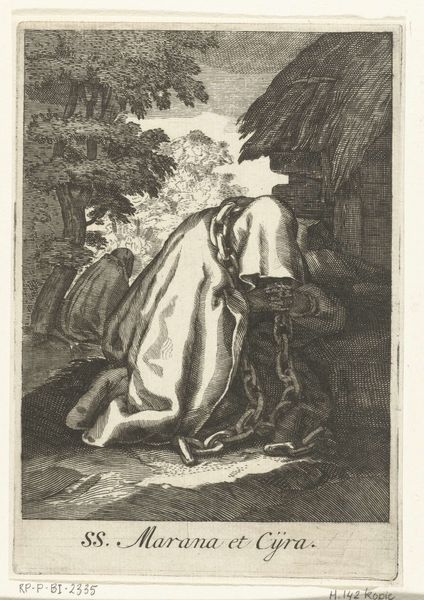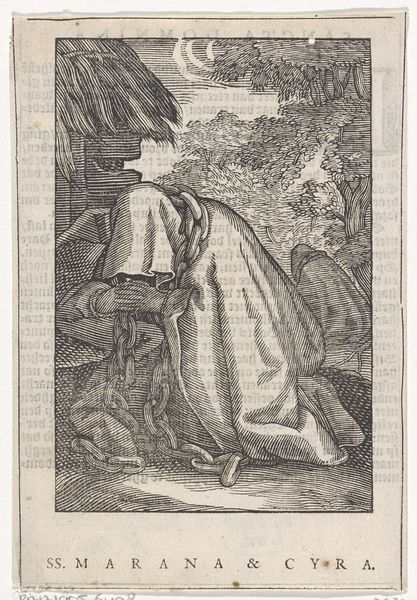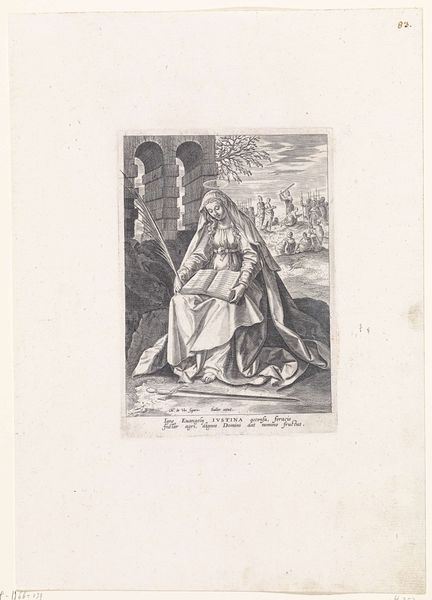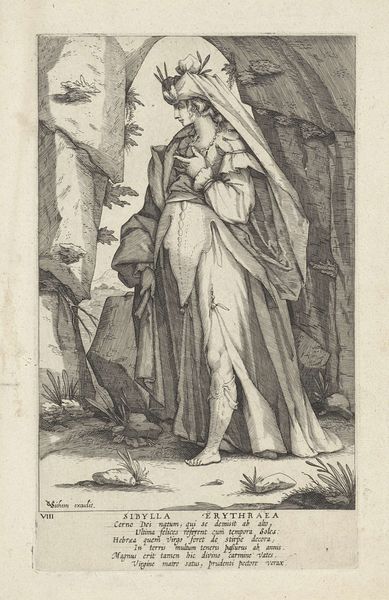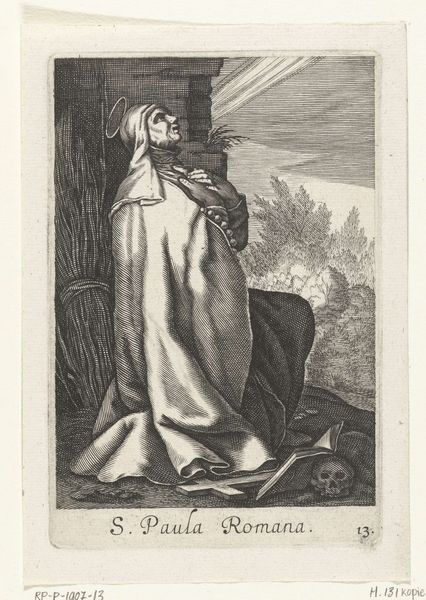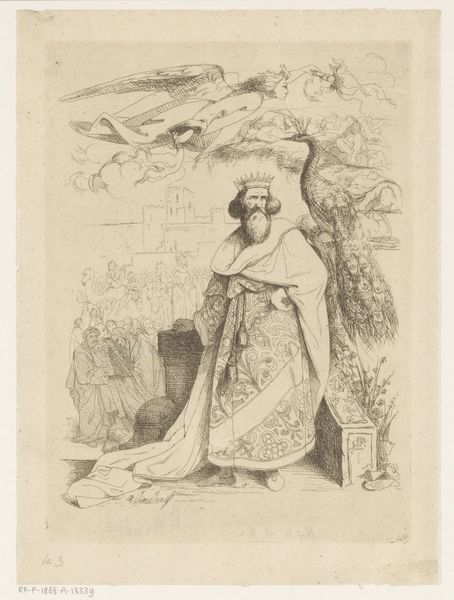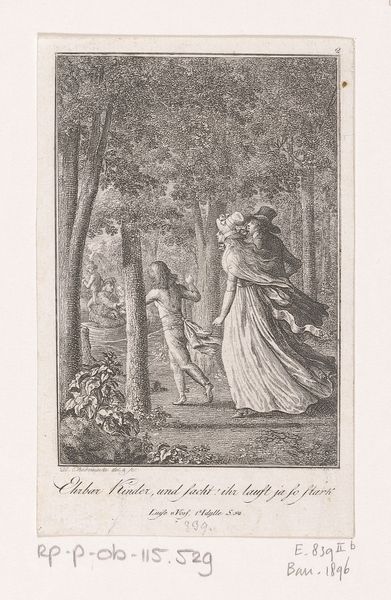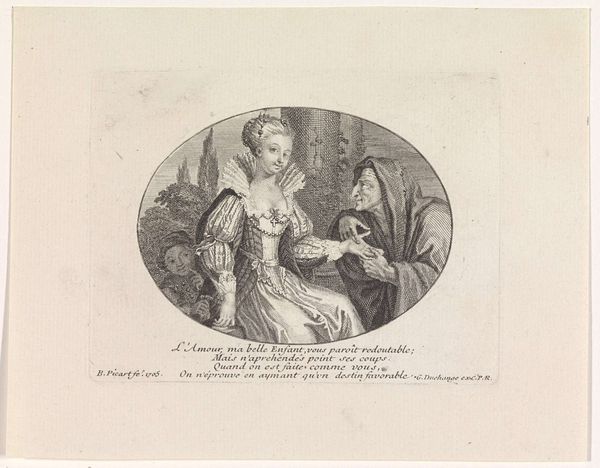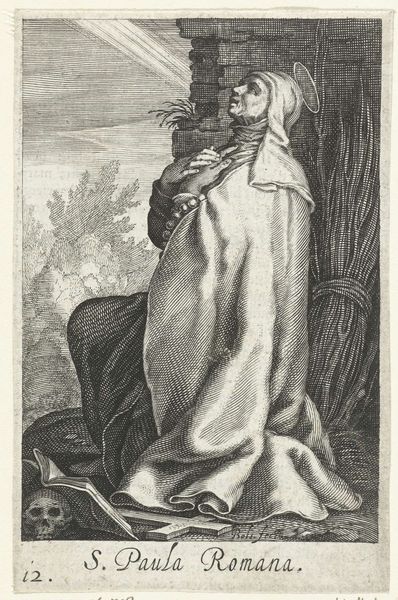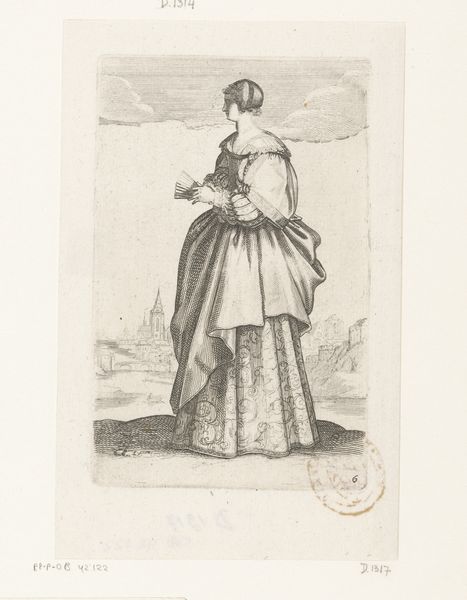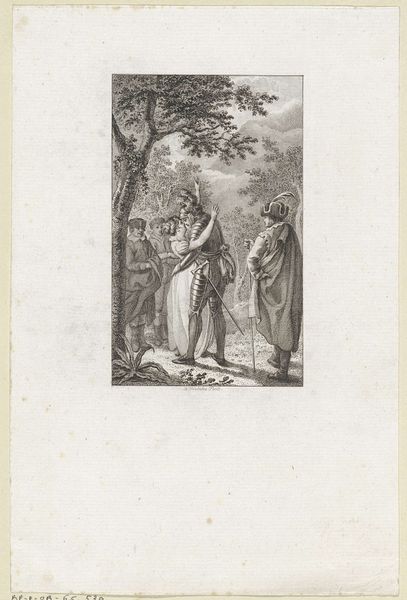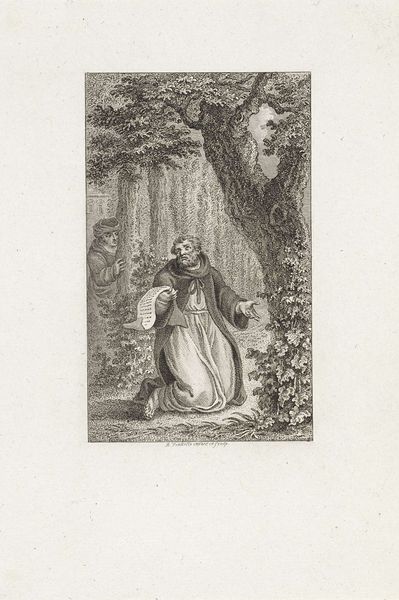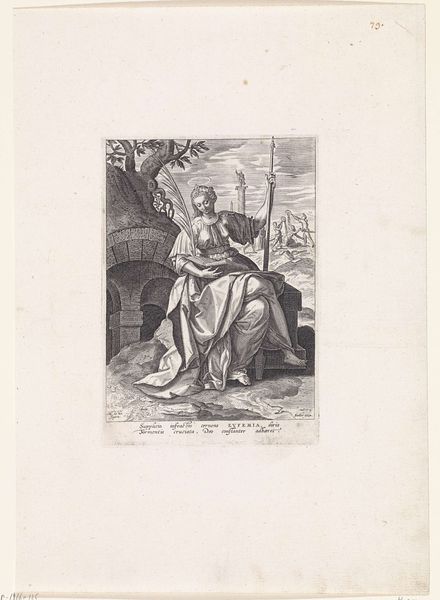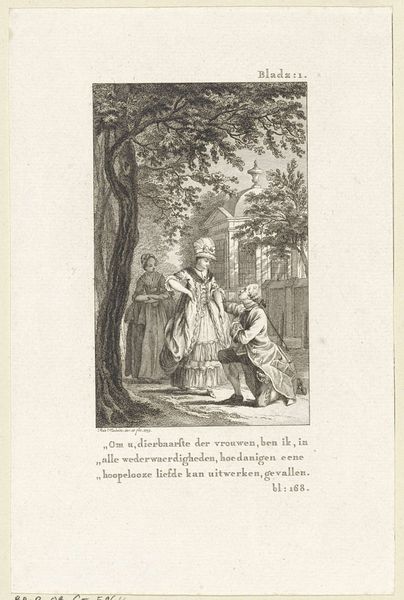
Heilige Marana van Syrië en heilige Cyra als kluizenaressen met ketenen 1590 - 1619
0:00
0:00
boetiusadamszbolswert
Rijksmuseum
engraving
#
baroque
#
old engraving style
#
figuration
#
history-painting
#
engraving
Dimensions: height 141 mm, width 88 mm
Copyright: Rijks Museum: Open Domain
Editor: We're looking at "Saints Marana of Syria and Cyra as Anchorites with Chains," an engraving from sometime between 1590 and 1619, by Boëtius Adamsz. Bolswert. The women depicted look incredibly austere and burdened. What strikes you when you view this work? Curator: I'm drawn to the literal chains represented in this engraving. It isn’t merely about religious devotion, but a physical, material constraint. What kind of labor went into forging those chains, and what societal forces would compel these women to wear them as an act of faith? It begs the question: What were the economic drivers shaping such extreme displays of piety? Editor: That’s a fascinating way to approach it! I was mainly thinking about the spiritual devotion...the image makes me feel like they wanted to isolate themselves to find religion... Curator: Precisely. But isolation is never absolute. The materials used in their clothing, their shelter - everything had a source, a maker. What does the consumption of these materials signify? Was their rejection of worldly comforts a critique of burgeoning mercantile society? Editor: I never thought about it that way, how the "simplicity" still relies on material production and consumption. The chains are clearly material, and quite heavy. And the labor in this image is almost entirely "invisible." Curator: Right. Bolswert created a very detailed engraving of individuals dedicated to immaterial belief, who nevertheless were dependent on the labor of others to manifest their beliefs through objects. He gives weight to an existence lived without labor, and makes their devotional process tangible to us. What's more pious? Hard physical work or devoted thought? It poses very difficult questions that might make people uneasy. Editor: This really changed my perspective. It makes me question what exactly is being displayed here, and how reliant religious devotion could be on earthly things. Curator: Indeed. By centering the material conditions, we can dissect how these images operated within a larger economy of belief and production.
Comments
No comments
Be the first to comment and join the conversation on the ultimate creative platform.
